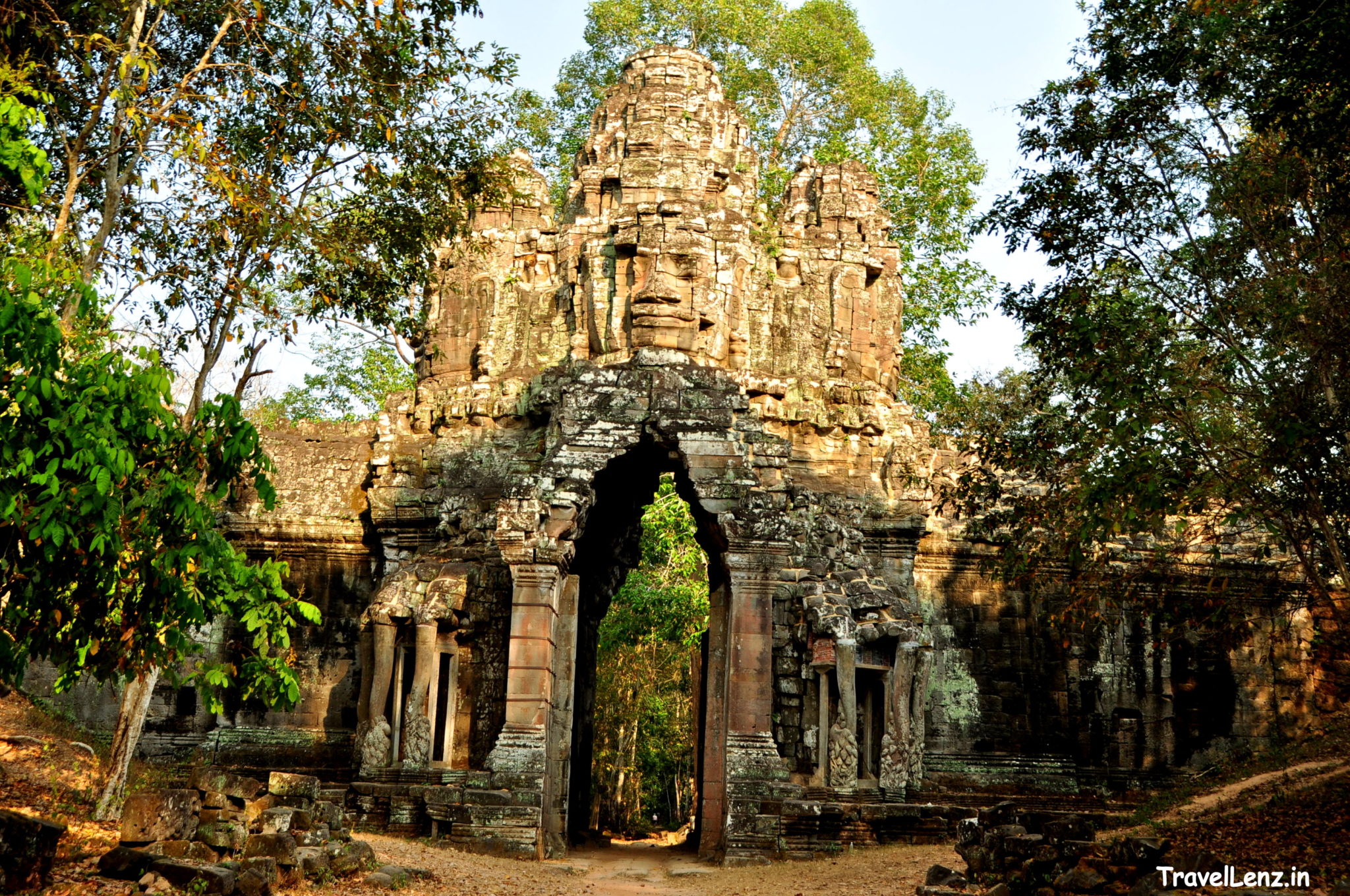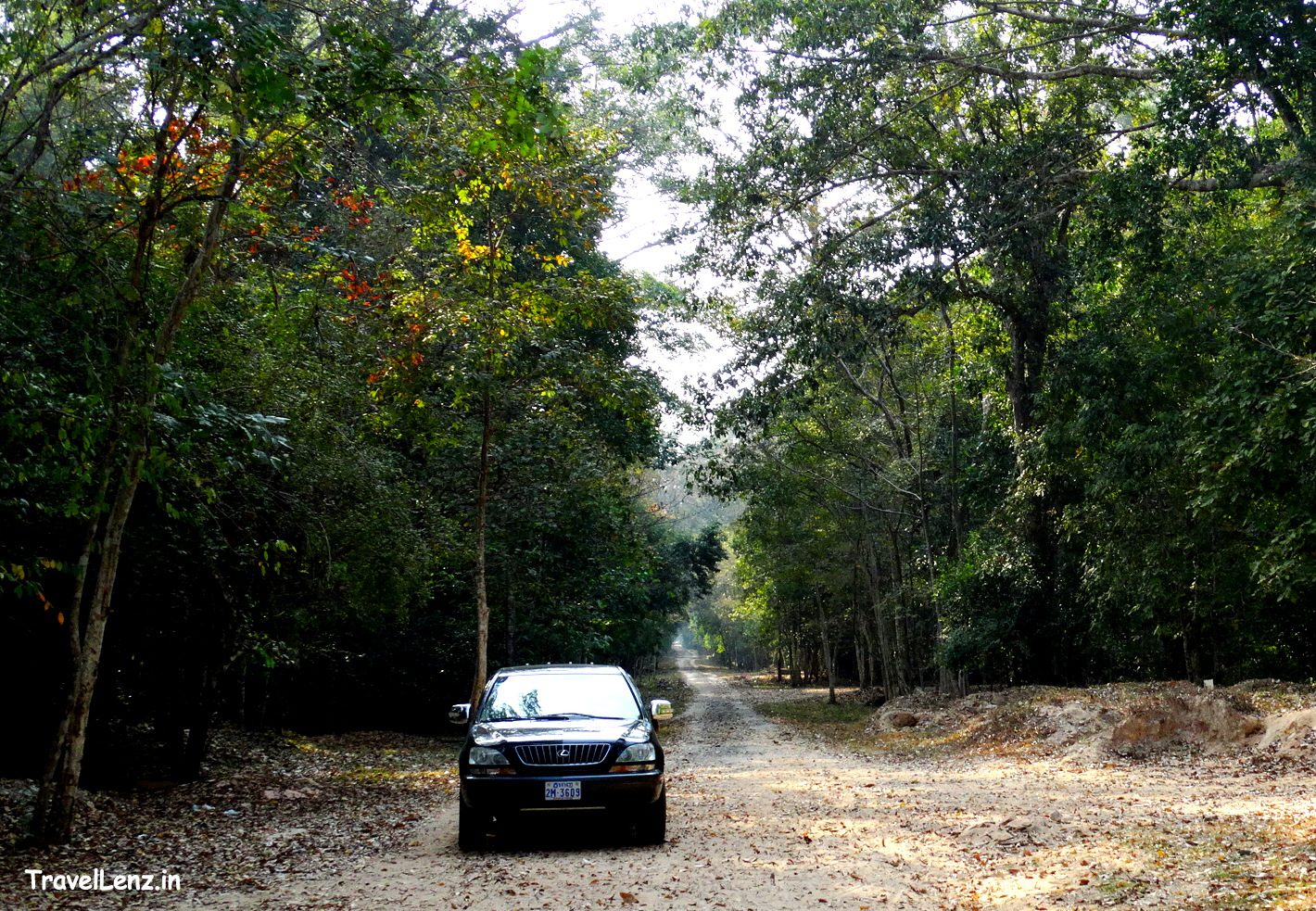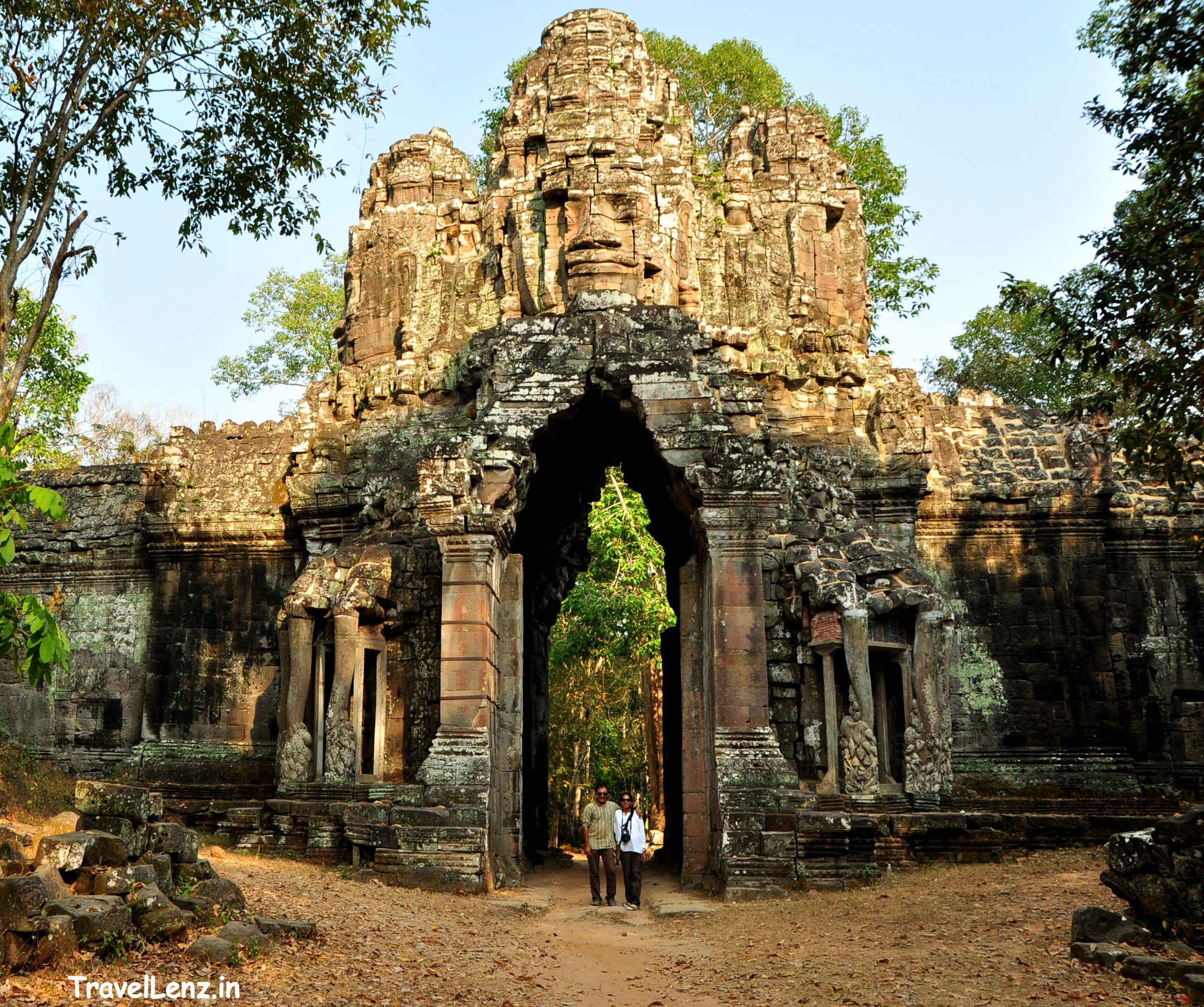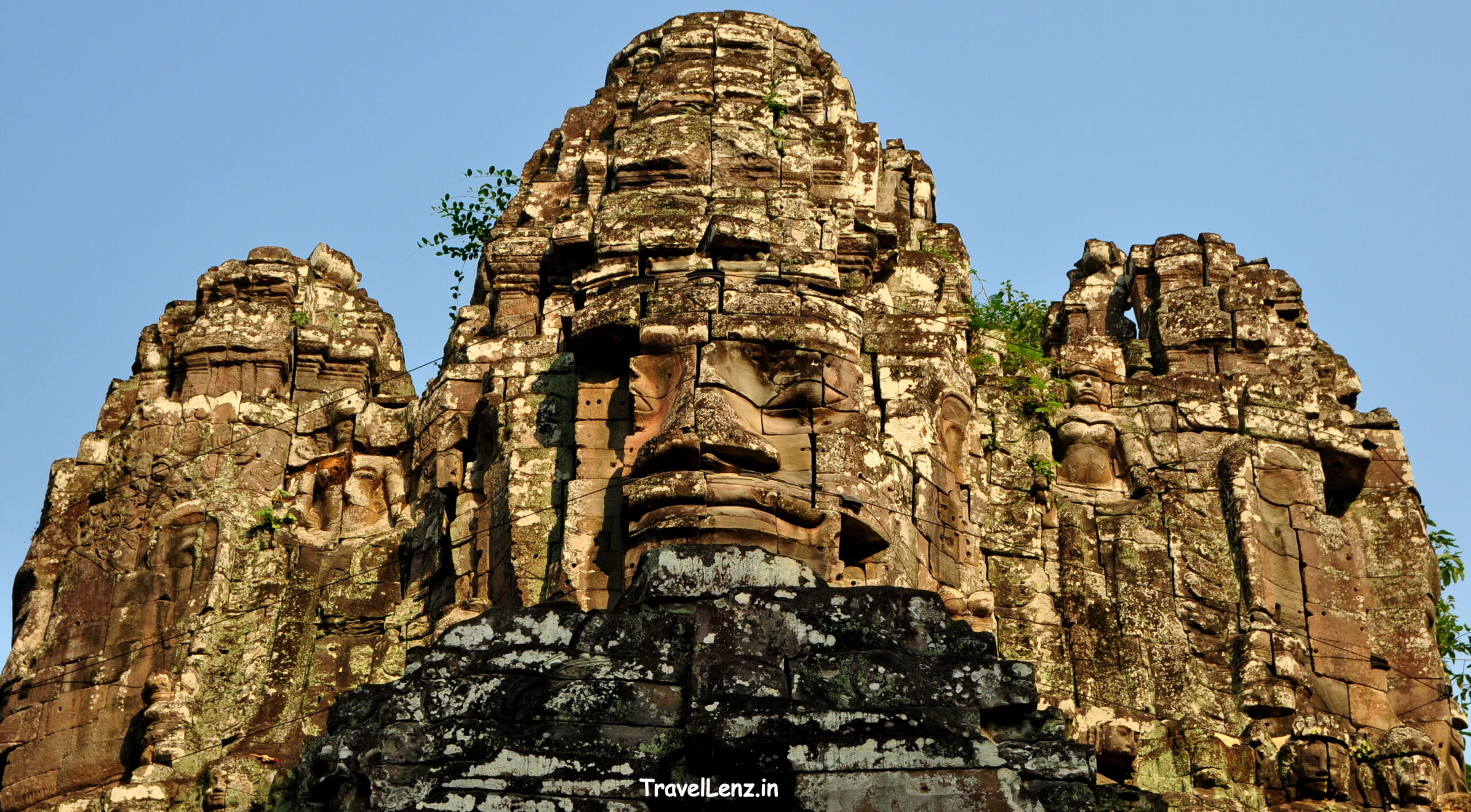Last Updated on May 20, 2021
After visiting the twin temples, Tes drove his car along a forest path with huge green trees and overgrown roots. Our next destination was called the Gate of the Dead, a gate that had long been abandoned to the jungle. This is one of the five gates which guards the ancient city of Angkor Thom. The gates of Angkor Thom were built by King Jayavarman VII in the late 12th century as part of the reconstruction of the city, following the victory over the Cham enemy army.
Gates of Angkor Thom
On the north, south, and west side of the walls of Angkor Thom, there is one gate each strategically positioned at the cardinal points. However, on the eastern wall, there are two gates – the gate of the dead that is located at the cardinal point and the victory gate that leads directly to the royal palace.
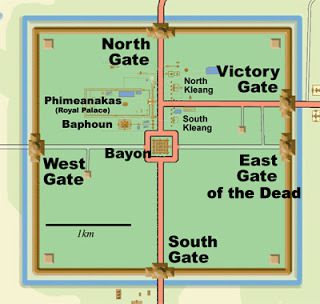
Gate of the Dead
Though there is no historical evidence, locals believe that the Gate of Dead gets its name from the custom of the gate only being used when transporting a king to his funeral.
Legend also has it that the dead bodies of guilty convicts were disposed of through this gate.
When compared to the south gate we had visited earlier in the morning, there was no coach parties, no tuk-tuks, no cars. The woods where the gate stood had an eerie stillness about it; maybe the gate was infamous for dead bodies passing through it.
As seen on the southern gate, here also, on both sides of the tower, towards the base there was an elephant each. Airavata – the three-headed elephant is seen plucking lotus flowers with its trunks.
And just like all the other gate towers, this tower had carved faces on top of the gate looking towards the four cardinal directions, reminiscent of those at Bayon and Ta Som.
Tes asked us to walk towards the tower and take a look up. The openings were originally furnished with double wooden doors with closing bars, the holes for which are still visible at the jambs.
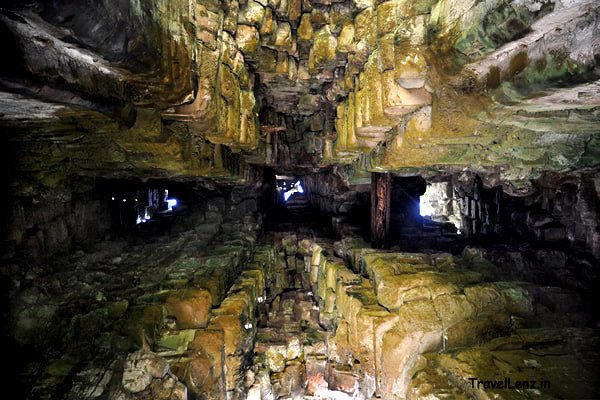
Beyond the gate was a causeway with Deva and Asura railings, but Tes said it was in a very poor condition and unrestored, so we did not venture further.
And we were to spend the next few hours before sunset, exploring Angkor Wat, so we moved on.


